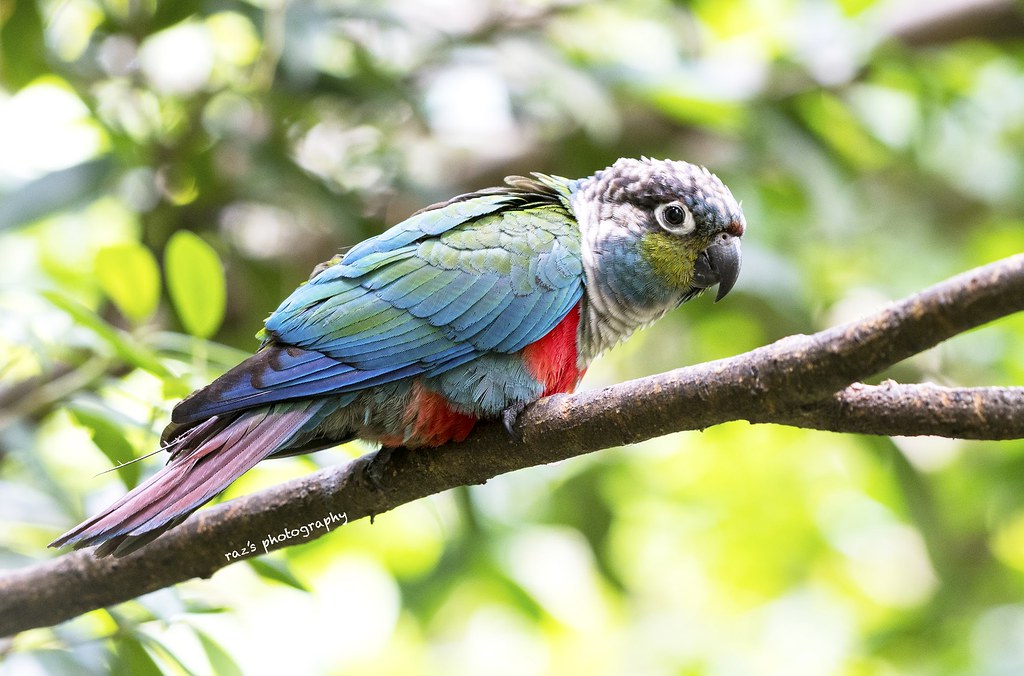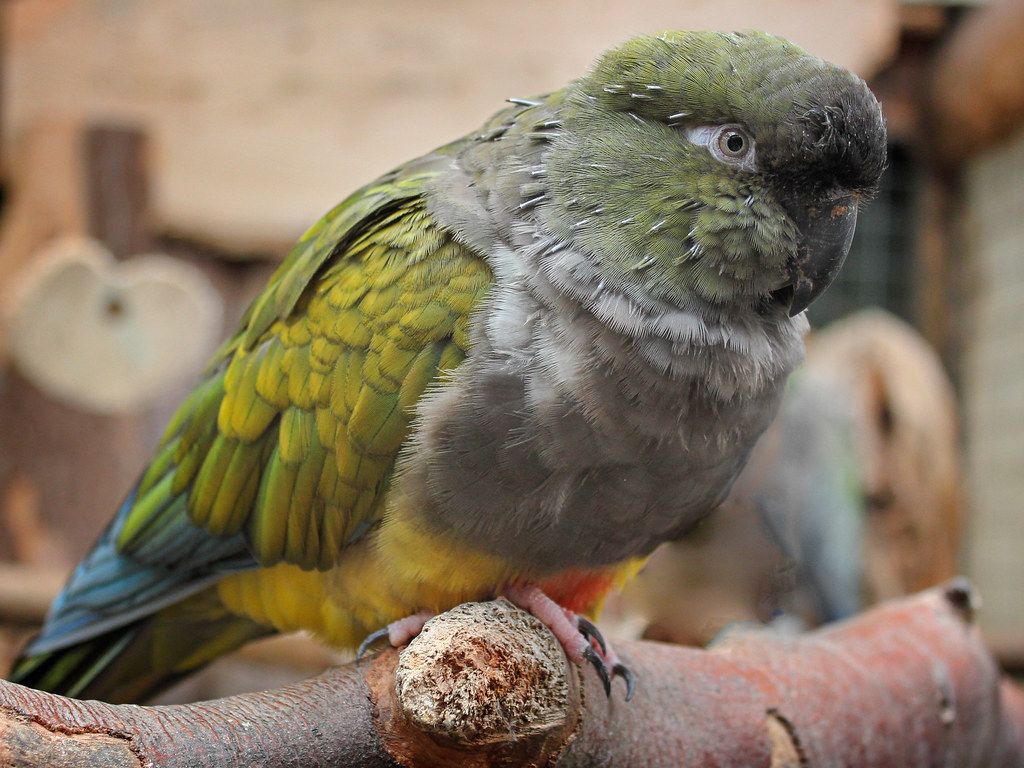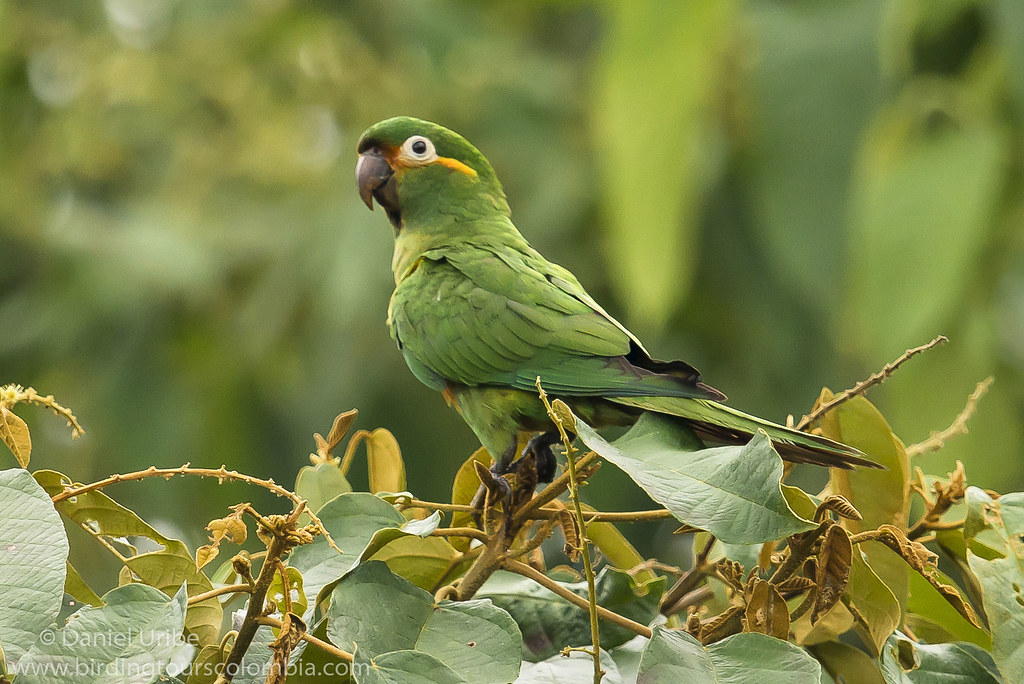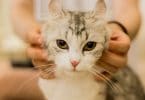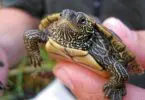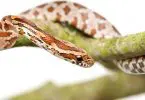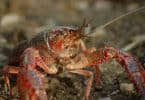Table of Contents
What Are Conures?
Conures are playful, intelligent birds that vary in size from small to medium, that belong to the parakeet family of parrots. This specie of parrots is native to South America and is often considered a small bird with a big personality.
These parrots have a tapered, cone-shaped tail and a slender body, with green plumage filled with patches of different colors. They have hooked, charcoal grey beaks, all curved in a similar way.
All conures have tails as long as their small, slender bodies differentiate them from other parrot families and parakeets. They are very similar to Macaws, but are smaller and less chunky, with larger heads.
Behavior And Personality:
Conures are the friendliest and the most outgoing of all parrots. They are very loving and joyous and can quickly adapt to a new environment. This makes them easy to train and play with. Although they are very loud and vocal, they are highly intelligent and make perfect pets.
Conures are known for being acrobatic and highly vocal. These birds are beautiful and always loaded with energy. They have great talents for mimicry, although they are not known for it. Their beaks are very strong, and most conures are even known to be a little nippy and bad-tempered at times.
Conures are ideal for people who have previously owned and trained birds, especially parrots, and are the perfect budget-friendly buy.
Care And Feeding:
Conures love extra care and attention and are highly interactive with their owners. They are very energetic in nature, thus requiring more room in their cages to play around. They prefer loud, clanking toys, like bells and rattles.
Wild conures eat a variety of seed types, leaves, and insects. They also enjoy nuts and fruits. But as conures are prone to vitamin A and calcium deficiencies and obesity, nuts are preferred over seeds for maintaining their health.
The History Of Conures:
These tropical American birds have a very long history and have been with us for possibly more than a hundred years.
The first conures were discovered throughout Latin America, Mexico, through the Caribbean, to southern Chile.
Today, these new birds are found all over the central and southern parts of America, Southern Mexico, and the Caribbean Islands. They are called new birds because they belong to the Americas, which is most of the Western Hemisphere.
Unfortunately, these exotic birds are threatened with extinction, as deforestation and climate-related issues are increasing by the day.
Types Of Conures:
There are about dozens of different types of conures, but all of them are pretty similar in behavior, but own unique characteristics. They are mainly of two kinds, the Aratinga conures and the Pyrrhura conures.
Aratinga means “little Macaw” in Latin, meaning they are exactly like the big, colorful Brazilian parrots we all have seen in Angry Birds Rio, except they are quite smaller in size.
Pyrrhura conures are the smallest of all conures. Most of the known conures belong to the Pyrrhura genus. In contrast to Aratinga conures, the Pyrrhura conures are quiet and apartment-friendly.
Types of Aratinga Conures:
Some of the popular Aratinga Conures are listed below:
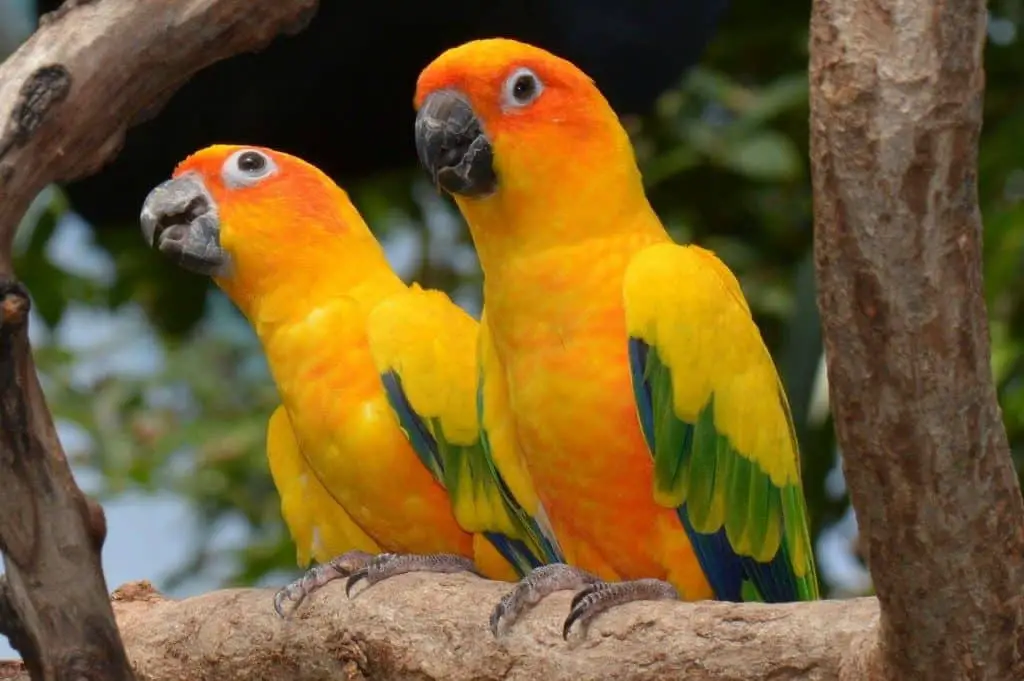
1. The Blue Crowned Conure:
These conures are one of the most liked conures among bird fanciers. They are known to have a green plumage, with a unique blue crown, made of two shades of blue.
These intelligent conures are known to have better speaking skills than most conures, with an extensive vocabulary.
They are widely found from Columbia to Argentina. Their natural habitats are mostly found to be rainforests and woodlands. This specie of parakeets is popularly known for attacking grain and crops.
Blue-crowned conures do not enjoy being locked in a cage and love the extra attention from their hosts. They require a well-balanced diet and excellent care, along with puzzle toys and loud bells.
2. The Brown Throated Conure:
The brown-throated conure is known for being goofy, and are one the rarest specie of parakeets. They are also sometimes called the St. Thomas conure. These conures are known to inhabit holes in rocks and tree mounds.
These conures are known to be very social and lovable birds. They tend to develop a deep bond with their owners and are the perfect low maintenance parrots for beginner owners. They have more emotional needs than most parrots and require extra playtime and interaction.
3. The Cherry Headed Conure / The Red Masked Conure:
This parrot is named after its notable characteristic, which is a bold, bright red colored head. The rest of the body bright green, with predominant white eyes. They are also sometimes known as the Red Masked Parakeet.
The cherry headed conure is known for being highly talkative, and are considered to be the best talkers of all conures. These parrots are very loud, hence unsuitable for apartment dwellers. They are lovely, affectionate birds that like to entertain their audience.
This red masked parakeet loves to be the center of attention. They love to learn new tricks and like to spend a significant amount of time interacting with others. These loud, chatty birds are very social, and rarely run out of energy!
4. The Dusky Headed Conure:
The dusky headed conure is also popularly known as Weddell’s conure. This parakeet is small, green, and Neotropical, with a dominant dusty grey head. It is most commonly found in open wooded habitats in the western Amazon basin of South America.
The dusky headed conure is not as loud as other conure breeds, and are comparatively less active and energetic. Although they are easy to breed, their trade is not that common, and are mostly found in the wild.
They are mostly seen in flocks and are said to make pleasant chirping noises. This specie of conures has a mutation with a beautiful blue color, although it is very rare.
5. The Sun Conure:
A large flock of this specie of conures greatly resembles the sunset, which gives them their name. The sun conure has a strikingly bright yellow body, and are one of the most popular Aratinga conures known to be kept as pets.
Sun conures make great pets. They are very entertaining, social, and very noisy birds. Like any other conure, they love to play with their owners and require hours of human interaction every day.
They have a lifespan of 20-25 years, which means that they are a long-time commitment.
Sun conures are more aggressive and nippy than most conures, thus better for more experienced bird owners.
They are fun, curious, and social parrots that make ideal pets for those with bigger houses.
6. The Jenday Conure:
The Jenday Conure is native to northeastern Brazil, and is very similar to the sun conure, in both looks and personality. They are distinguished from the sun conure by distinct colors instead of color splashes.
The Jenday conure has a bright yellow head, and an orange body, the tail and wings being a combination of blue and green.
This specie is also very demanding of human interaction, like the sun conure. They are not the ideal pets for apartment dwellers due to their loud and clumsy behavior and their tendency to survive in more open places.
They are fun, lively birds that love learning new tricks. Their vigilant and active personality makes them excellent watchdogs, and they alert their owners with loud screeches.
7. The Mitred Conure:
The Mitred conure, also known as the Mitred parakeet, is distinguished from the cherry headed conure due to its patchy bright red colored head mixed with green feathers, unlike the cherry headed conure that only has a red top without any patches.
When given the right amount of time and attention, they make great house pets and even have the potential to make good speakers. They are chatty birds, and they love making loud screeches and trills all day long.
These conures are calmer than other conures, and are a lot tamer, although, at times, they may get aggressive when they do not get the attention they require. They are comical, affectionate, and eager to explore, and also make great watch birds.
8. The Nanday Conure:
The nanday conure, or the nanday parakeet, is also popularly known as the black-hooded parakeet nanday. Flocks of these birds are seen in Los Angeles, Miami, California, and Florida.
They have a distinctive blackhead, and females have a light blue throat and chest area. They have a bright green body, with a blue tail.
Like most parakeets, the nanday conure also thrives on human attention and learning new tricks to catch anyone’s attention.
Although they are not the quietest parakeets, they make lovely pets and shower their owners with affection. There shrill and raspy voice may not make them ideal pets for those too sensitive to noise.
9. The Orange Fronted Conure/ The Half Moon Conure:
The orange fronted conure or the orange fronted parakeet is also popularly known as the half-moon conure. They are inhabited from western Mexico to Costa Rica.
These parrots have a green body, with an orange stripe that stretches between the two eyes and are known to be the smallest of their families. These bright parrots are genuinely happy and are among the better talkers of the conure breeds. They make very playful and energetic and active house pets.
The orange fronted conures love making soft murmurs and whistles. Their quiet and noiseless personality makes them suitable for apartment owners as well. Their friendly and cheerful personality makes them the perfect, lovable pet birds.
10. The Peach Fronted Conure:
The peach fronted conure is most popularly known for its peach forehead and a peach ring around its eyes. They have a yellow body, with a green tail and wings. Its unique body and personality are an eye-catcher for many.
They are similar in appearance to the half-moon conure, but their beak is shorter, and they have a larger orange patch on their forecrown.
These parrots are playful and lively in nature and love to be entertained with toys. The especially like to climb and chew on things like wood, thus chewing toys are recommended for all peach fronted conure owners.
11. The Golden Capped Parakeet/ The Flame Capped Conure:
The golden capped parakeet is found in the tropical and subtropical forests of Paraguay and Brazil, and are one of the endangered species of the Aratinga conures.Their dominant orange forehead that blends into the rest of the green feathers is a charm for many buyers.
The body is mostly green and contrasts with its black bill, reddish-yellow crown and forehead, and reddish belly patch.
Its feathers are a combination of blue and green, but during flight, the bright orange underwings are highly prominent and distinctive. The bluish tip of their tail complements its olive green feathers.
The golden capped parakeets are cute, cuddly parrots, and require one-on-one attention from their owners. They are known to be extremely loud birds, their constant screams ringing from dawn to dusk. They are known to be catastrophic and love to chew on wooden objects.
12. The Sulphur Breasted Parakeet:
The Sulphur breasted parakeet is native to Eastern Amazonia. They are called Sulphur breasted due to its yellow-colored chest, with wings and the tail being a combination of green and yellow.
The bright orange coloration around the eye is a charming and eye-catching characteristic of the Sulphur breasted conure.
The Sulphur breasted conure is a new species of parrots, closely related to the sun conure. Unfortunately, these birds are rare and already at the risk of extinction.
Types of Pyrrhura Conures:
Pyrrhura Conures are mostly wild birds, but some of them are great for keeping as pets. Some of the most sought-after ones are listed below:
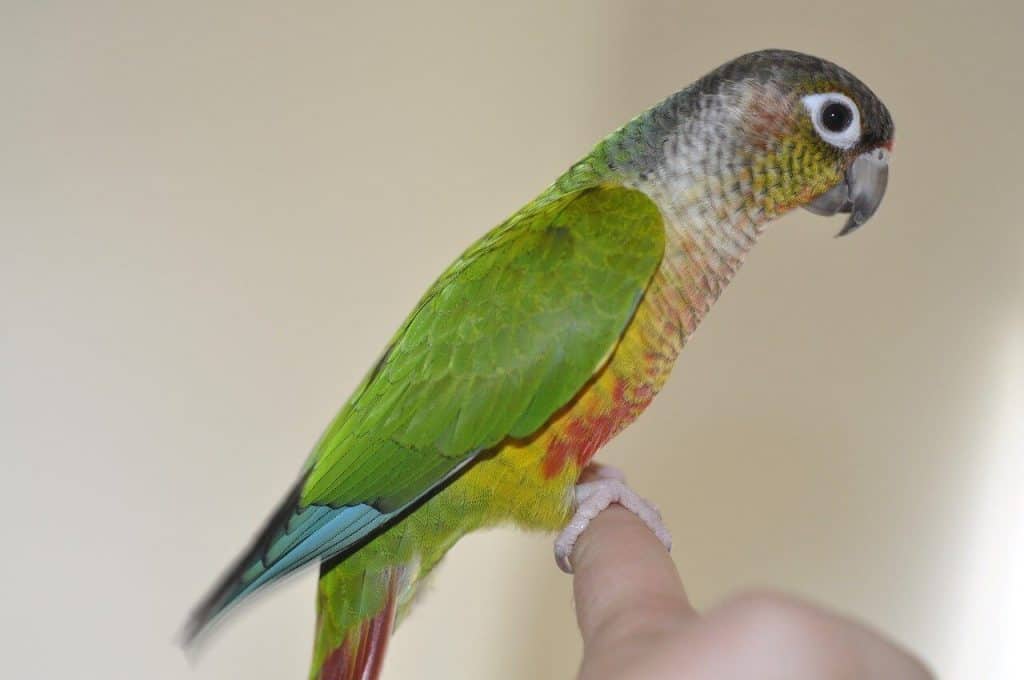
1. The Green Cheeked Conure:
The green cheeked conure or green-cheeked parakeet is one of the most popular breeds of Pyrrhura conures. It is mostly found in the forests of South America and is also a popular pet worldwide.
Green cheeked parakeets are of a joyous and curious nature. They are comparatively less noisy than other parakeets, which makes them ideal pets for all types of owners, even the apartment dwellers.
It is characterized by grey feathers around its neck, tipped with white to give a scaly effect. They have green cheeks, and a mostly green body, although they come in various colors, and a maroon patch on their bellies.
Green cheeked parakeets are not known for their mimicking skills, but still make great pets and companions due to their goofy and silly nature, and love to entertain their guests.
Like any other conure, the green cheeked conure may also be a little nippy and tempered at times. However, they are one of the most easygoing and playful of all parakeets.
2. The Black-Capped Conure/ The Rock Conure:
This black-capped parakeet is also widely known as the rock conure. They are found in the humid forests of South America, including Bolivia, Peru, and southwestern Brazil.
They are one of the smallest specie of conures and are known for their distinctive features, such as its brownish-black crown and its unique, scale-patterned neck, which gives it its name.
The black-capped conure is known to be a little shy initially, but as soon as they warm up to their owners, they make great companions, even for apartment dwellers, due to their quiet personality. Like many other conures, the black-capped parakeet is also a vulnerable species.
3. The Pearly Parakeet:
The pearly parakeet or the pearly conure is native to the east Amazonian tropical rainforests in Brazil. They are an endangered species, only ten thousand remaining in the wild today.
They have a blackhead, with the neck covered in feathers, which are various shades of grey. The rest of their body is bright hues of blue and green.
The parakeets belonging to the Pyrrhura family are known to be clownish, and head over heels for fun and games. Thus the pearly parakeets or conures are no different.
Due to their rarity, they are one of the most sought after birds and are a lot calmer than other Pyrrhura parakeets like the black-capped conure and the maroon bellied conure.
Their goofy and cheery personality enables them to be friendly companions and treasured pets all around the world.
4. The Painted Conure:
The painted conure or the painted parakeet is widely found in the north of the Amazon river and is found to visit water places regularly. They travel in flocks, as bonded pairs of birds tend to remain close to one another.
They inhabit old, dead trees in the wild, and tend to live at height. Their camouflaging feathers make them challenging to detect in the wild, even though their screeches are loud and piercing.
Its body is mostly green, with grey, scaly feathers on its head and neck, making it look very similar to other Pyrrhura conures.
They have a blue forehead, with maroon feathers surrounding the eyes. They are known mainly for the bright red bottom patch at the base of their wings, best visible when they are settled down. The painted conure also have rad patches on their abdomen.
5. The White-eared Parakeet/ Maroon-Faced Parakeet:
The white-eared parakeet is also sometimes known as the maroon-faced parakeet. It is endemic to Atlantic Forest in eastern Brazil. They are found in tall, dense and humid trees of the Brazilian rainforests.
Like most Pyrrhura conures, the white-eared parakeet is also noticeable due to its shrill, screeching sounds, but are easily camouflaged due to its plumage. They tend to move around in flocks.
Their plumage is mostly green, and their chest has a big patch of red in the middle. Their wings have a red top, prominent when they are settled down or perched.
They have white patches where their ears are located, which gives them their name. The lower back and abdomen is of beautiful maroon color.
The Maroon-Bellied Conure:
Often confused as its close relative, the green cheeked conure, the maroon bellied-conure, is native from southeastern Brazil to northeastern Argentina.
They are known with different names; some call it the maroon-bellied parakeet, some reddish-bellied parakeet, while others call it the brown-eared conure. It is sometimes referred to as the Scaly-breasted conure or the Scaly-breasted parakeet.
The maroon bellied conure is characterized by a primarily green plumage, with a maroon or a reddish belly, with brown patches around its ears. They have a grey, scaly neck, and maroon under the tail.
The maroon bellied parakeets are easily adaptable to the new environment and human interaction. They are independent and bold, yet of a very friendly nature. They tend to be mostly quiet, but when they are too excited, they like to express it with a sharp, high-pitched shrill.
1. The Blue-Throated Conure:
The blue-throated conure is also sometimes known as the blue-chested or red-rumped parakeet.
Originating from the Atlantic rainforests in eastern Brazil, the blue-throated conures are the most endangered species of conures due to laser amounts of deforestation and habitat destruction.
2. The Maroon-Tailed Parakeet:
The maroon-tailed parakeet or the maroon-tailed conure is most abundantly found in the moist tropical and subtropical forests of Brazil, Colombia, Ecuador, Peru, and Venezuela.
Although their number is decreasing, they are not considered to be an endangered species.They share the friendly traits of their relatives, the green-cheeked conure, and the maroon-bellied conure. They make lovely, affectionate pets and are highly intelligent, active, and bold.
3. The Crimson-Bellied Conure:
The crimson-bellied parakeet is more commonly known as the crimson bellied-conure in aviculture. It is often confused with the pearly conure due to similar scientific names.
Their bright crimson-colored lower belly is their predominant feature, along with its scaly grey head and a dull brown crown. Although their numbers are declining, they are not listed among endangered species.
Other Conures:
The Golden Parakeet/ The Queen of Bavaria:
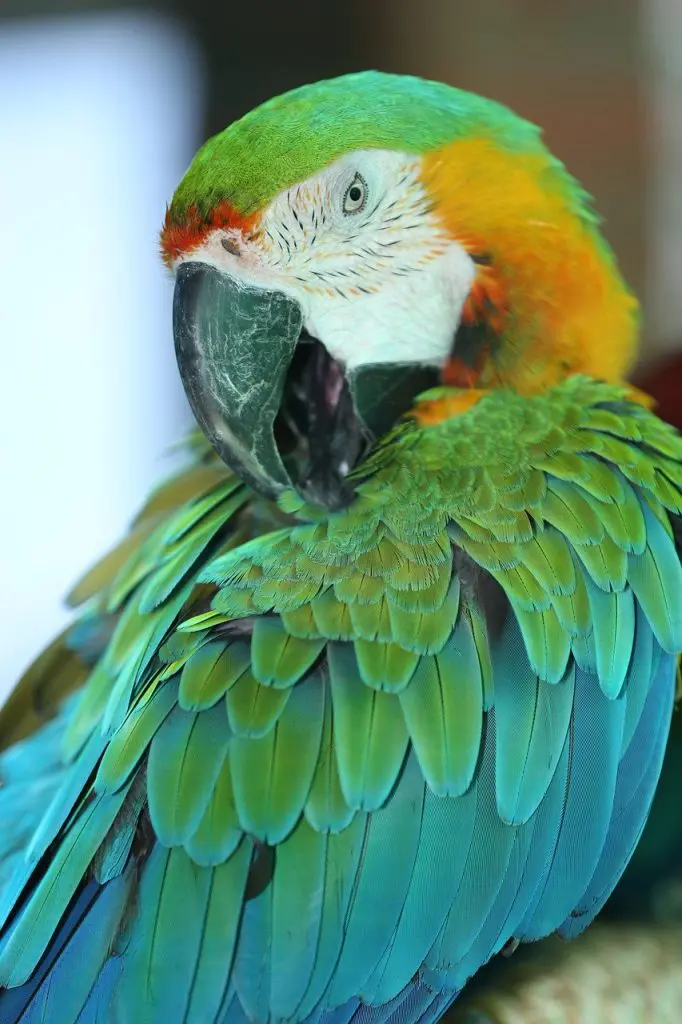
The golden parakeet or the golden conure is most popularly known for its entirely golden plumage, although in some species, their lower tail and body are found to be green.
They are native to the Amazon Basin of northern Brazil and are also known as the Queen of Bavaria parakeets. The golden plumage is a stunning, eye-catching feature of these parakeets, which gives them their name. They are not a very known species due to its little quantity in the wild.
Patagonian Conure/ Burrowing Parrot:
This olive-colored parrot is greatly found in Argentina. Their specie is declining, like many other conures. It is considered the largest species of conures, known to be almost twenty inches tall, head to tail.
They are greenish-brown and dark olive-colored, and like most parakeets, are known to make wonderful cuddly pets.
The Patagonian conure is known to be very loud and vocal, but still make great companions for people who own a bigger house.
The Golden-Plumed Parakeet:
The golden-plumed parakeet is found in humid rainforests of Ecuador, Columbia, and Peru, and is also known as Branicki’s Conure. They are an endangered species, are unfortunately not that common in aviculture.
They are characterized by an entirely green plumage, with a streak of golden around its eyes and a golden underbelly.



